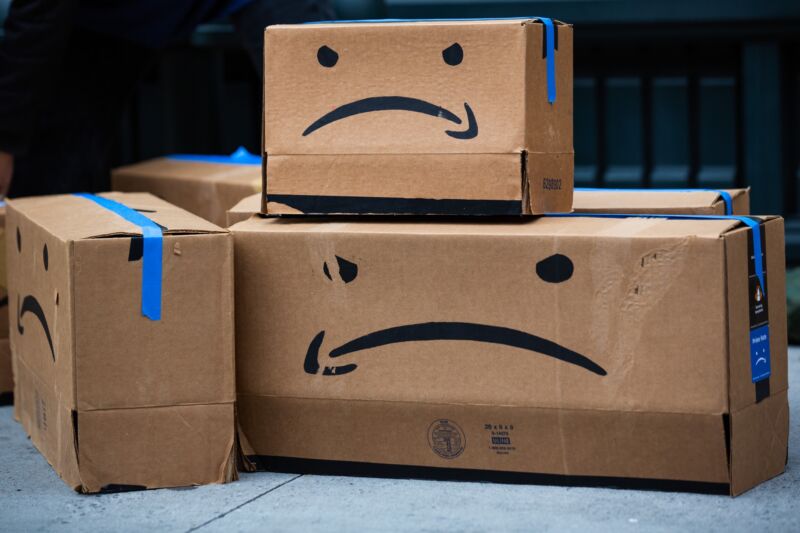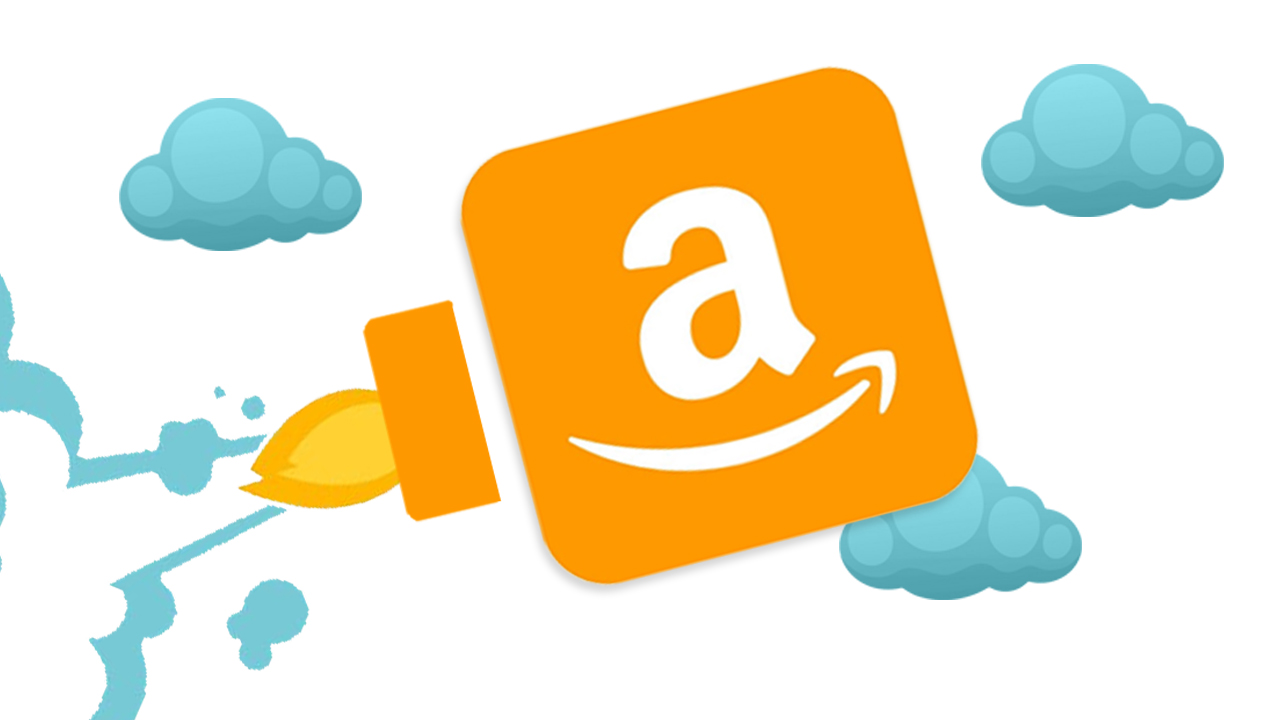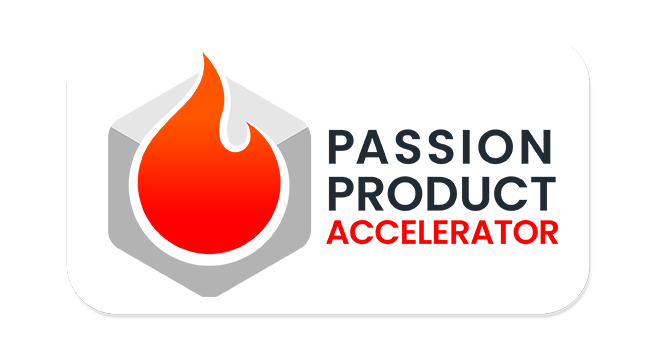Every single day, thousands of Amazon sellers unknowingly sabotage their own success by making the same Amazon mistakes. They launch products with enthusiasm, invest their hard-earned money, and pour countless hours into their businesses. Only to watch their profits evaporate through entirely preventable mistakes. The frustrating part? These aren’t complex technical errors or unavoidable market forces. Rather, they’re fundamental missteps that stem from lack of preparation, and poor planning. Not having the right guidance from the start.
However, the good news is that you’re about to gain a significant advantage over your competition. Elizabeth, an Amazon ads expert and agency owner who’s helped countless brands grow through strategic advertising. She recently shared the five biggest mistakes she sees Amazon sellers make repeatedly. These insights come from real-world experience working with both struggling sellers and those generating six and seven figures in revenue. The patterns are clear, and the solutions are surprisingly straightforward.
Throughout this article, we’ll explore each of these critical mistakes in depth and, more importantly, show you exactly how to avoid them. Additionally, you’ll discover how proven systems like the Passion Product Formula help sellers bypass these pitfalls entirely by providing a structured roadmap from day one. Whether you’re just starting your Amazon journey or looking to scale an existing business, understanding these mistakes could mean the difference between barely breaking even and building genuine passive income. Consequently, let’s dive into the first, and perhaps most fundamental, mistake that undermines Amazon businesses before they even get off the ground.

- Mistake #1: Not Knowing Your Margins (Down to the Penny)
- Mistake #2: Not Factoring in Marketing/Ad Costs
- Mistake #3: Lack of Product-Market Fit
- Mistake #4: Not Making Data-Driven Decisions Quickly Enough
- Mistake #5: No Long-Term Vision (Knee-Jerk Reactions)
- The Common Thread
- Your Path to Amazon Success Starts Now
- Frequently Asked Questions
Mistake #1: Not Knowing Your Margins (Down to the Penny)

The Problem
The foundation of any successful Amazon business is crystal-clear knowledge of your profit margins. This is where most sellers stumble right out of the gate. When Elizabeth asks brand owners about their margins, she typically hears vague responses. “Oh, I think it’s about 30%,” they say. Others guess “around 25% or so.” This vague guessing might work for casual hobbies. For a real business that needs consistent profit? It creates a dangerous blind spot.
There’s a psychological element at play that Elizabeth identifies immediately. Many sellers subconsciously avoid calculating their true margins. As she puts it, “You don’t want to know because somehow that makes it real.” This avoidance feels protective in the moment. If you don’t look at the numbers, the problem doesn’t exist, right? Unfortunately, this mindset prevents you from making strategic decisions that could actually save your business. The reality exists whether you acknowledge it or not. Going in “eyes wide open” puts you on much better footing to understand what moves you can actually make.
What Gets Overlooked
Sellers often remember the obvious costs but forget numerous smaller expenses. These quickly erode profitability. Everyone accounts for the product cost itself and the 15% Amazon selling fee. Most remember the FBA pick and pack fees that Amazon charges for fulfillment. The hidden costs start piling up from there. Suddenly your comfortable 35% margin shrinks to a concerning 15% or less.
You need to factor in long-term storage fees for inventory that sits too long. Return processing costs add up. Damaged inventory can’t be resold. Overhead expenses continue regardless of sales. You’re also spending money on product photography, packaging materials, and barcode labels. Promotional inserts cost money. Prep services may be necessary before products even reach Amazon’s warehouses. All of these costs add up quickly. Without precise tracking down to the penny, you’re essentially flying blind. What looked like a profitable product on paper becomes a breakeven venture, or worse, a money-losing operation, in reality.
The Solution
The solution starts with brutal honesty and meticulous tracking. You need to know your margins true to the penny, as Elizabeth emphasizes. This means creating detailed spreadsheets or using specialized software tools. Account for every single expense associated with each product. You’ll have the real numbers you need to make informed decisions about pricing, inventory levels, and whether a product is even worth continuing.
Calculating your margins isn’t a one-time activity you complete before launch and never revisit. Successful sellers review their margins regularly, at least monthly. Costs change, Amazon fees adjust, and your product mix evolves. This ongoing vigilance allows you to spot problems early. Corrections can happen before they become catastrophic. Programs like the Passion Product Formula teach proper margin calculation from day one. You build this critical habit into your business foundation rather than trying to retrofit it later when problems arise.
Mistake #2: Not Factoring in Marketing/Ad Costs

The Reality of Amazon Ads
Building on the margin discussion, there’s another critical cost many sellers overlook entirely: marketing and advertising expenses. Elizabeth runs an Amazon ads agency, so she admittedly brings some bias to this conversation. Her experience reveals an undeniable truth, though. Conversion rates from Amazon ads typically outpace other advertising platforms. This makes them a necessary part of most successful Amazon strategies. The platform’s built-in buyer intent means you’re reaching people already in shopping mode. You’re not trying to interrupt their social media scrolling.
Success stories do exist without paid advertising. This proves that ads aren’t absolutely mandatory for every seller in every situation. One electrolyte powder business launched in 2025 without spending a single dollar on ads. The business still achieved $30K in revenue with approximately $10K in profit. Eventually, the business did incorporate advertising and scaled to $80-90K in revenue. The initial success came purely through organic strategies. This represents the exception rather than the rule, especially as Amazon’s marketplace becomes increasingly competitive.
The Planning Gap
The real problem emerges when sellers calculate their product margins but completely forget to budget for marketing costs. They look at the numbers and see what appears to be healthy profit potential. Forward they move with their launch. Then reality hits. They discover that the old saying “if you build it, they will come” doesn’t apply to Amazon. They realize they need to tell somebody about their product. Now their carefully calculated margins don’t leave room for advertising spend.
This backward approach creates unnecessary stress and often forces sellers into impossible choices. Do they run ads and sacrifice profitability? Do they skip advertising and hope for organic sales that may never materialize? Smart sellers build marketing costs into their initial planning from day one. When you factor in a realistic advertising budget, perhaps 10-15% of revenue initially, you can structure your entire business model accordingly. This might mean higher retail prices. Better negotiation could lower product costs. Simply choosing products with better margin potential can support the necessary marketing investment.
The Smart Approach in Amazon
The strategic approach involves leaving wiggle room in your margins specifically for advertising and marketing activities. Don’t calculate your product cost, Amazon fees, and other expenses and assume everything left over is pure profit. Deliberately set aside a portion for customer acquisition. When done correctly, advertising should increase your overall profitability, not decrease it. Yes, each individual sale might net less profit. You’re making significantly more sales overall, though. The total profit dollars increase substantially.
Start with your launch strategy intact. Don’t treat advertising as an afterthought you add three months later when organic sales disappoint. This proactive approach allows you to budget appropriately and set realistic expectations. Scaling can happen methodically. The Passion Product Formula teaches students the right balance between organic and paid strategies from the beginning. Students understand how advertising fits into their overall business model before investing thousands of dollars in inventory. This preparation prevents the common scenario where sellers feel trapped by thin margins. They become unable to invest in the growth strategies their businesses desperately need.
Mistake #3: Lack of Product-Market Fit

What is Amazon Product-Market Fit?
Beyond knowing your numbers inside and out, there’s a fundamental question every seller must answer before investing in inventory. Does your product actually solve a real problem for a specific group of people? Product-market fit means creating something that converts because people genuinely want to buy it. It’s not just something you personally think is cool or interesting. Passion certainly plays a role in building a successful Amazon business. That passion must align with actual market demand, or you’ll find yourself stuck with inventory nobody wants.
This distinction trips up countless sellers who start with their own preferences rather than customer needs. They think, “I would buy this,” or “My friends think this is great.” They assume that represents sufficient market validation. Your personal enthusiasm doesn’t pay the bills, customer purchases do. You need to validate that other people want your item. At minimum, serve a very specific shopper who’s actively searching for the solution you provide. You’re not operating in a vacuum. You’re up against established competition and often big players with significant advantages. Your product needs a compelling reason for customers to choose it over alternatives.
The Validation Process
Understanding how to achieve product-market fit starts with recognizing what Amazon truly is: a search engine. People don’t browse Amazon aimlessly like they might scroll Instagram or TikTok. They visit with specific intent, typing search terms for solutions to their problems or needs. Your job is to make the perfect product for those searches. When your ideal customer types in their query, your product appears as the obvious answer.
Consider the success story of Carnivore Electrolytes as a perfect example. The seller identified that people were actively searching terms like “carnivore electrolytes” and “electrolytes for carnivore diet.” When you performed those searches on Amazon, no products truly met that specific need. Existing electrolyte products added stevia, sugar, or other ingredients that carnivore dieters wanted to avoid. Creating an electrolyte product branded specifically for people on the carnivore diet filled an obvious gap. The result? Strong product-market fit that led to organic growth. Customers literally said, “I’ve been searching for exactly this!” Elizabeth herself discovered she was the target customer. She had searched for carnivore electrolytes and purchased that exact product because it solved her specific problem.
How to Achieve Product-Market Fit
Achieving strong product-market fit requires thinking of your shopper as a real person with specific needs, frustrations, and desires. You need to understand who they are and what they’re searching for. What problems are they trying to solve? This goes deeper than demographics. You’re trying to understand their mindset when they’re actively searching for a product like yours. What motivated them to open Amazon, and solution are they hoping to find? What would make them immediately click on your listing instead of scrolling past?
Mine competitor reviews ruthlessly to understand what people like about existing options. More importantly, understand what they don’t like. Read the three-star and two-star reviews especially carefully. They reveal the specific shortcomings your product could address. Build your product to serve that audience by incorporating the features people want. Eliminate the frustrations they mention repeatedly. Consider your competition carefully and identify how you can differentiate meaningfully. This could be through features, branding, packaging, or positioning. The Passion Product Formula provides a systematic approach to finding and validating profitable product ideas using this exact methodology. You don’t invest in inventory before confirming real market demand exists.
Mistake #4: Not Making Data-Driven Decisions Quickly Enough

The Analysis Paralysis Problem
Once your product is live on Amazon, the next critical mistake emerges. Many sellers fail to review data quickly enough to make timely optimizations. Everyone talks about making “data-driven decisions” and looking at the numbers to guide strategy. Many sellers wait far too long to even look at their data, though. They use the excuse that they need to “wait for enough data to roll in” before making any assessments. This sounds logical on the surface. It often becomes a convenient justification for procrastination and avoidance.
The myth that you need weeks or months of data before looking at anything creates dangerous blind spots. Elizabeth shares that she’s encountered sellers who launch a new product or start a new advertising campaign and don’t check it for two or three weeks. They genuinely believe they’re doing the right thing by waiting for statistical significance. This approach ignores a crucial question: What if meaningful activity happened on day one, and you waited two weeks to notice? Those two weeks of opportunity are now gone forever. You’re already far behind on optimization.
The Waiting Game Trap
The cost of waiting extends far beyond advertising performance. Consider this sobering example: the seller who created the successful electrolyte business generated approximately $100,000 in profit during the first year. Sounds impressive, right? He had the original idea two years earlier but waited to take action. His hesitation and analysis paralysis cost him roughly $200,000 in lost profit. That’s money he could have earned if he’d simply started sooner instead of overthinking every detail.
This scenario plays out constantly with aspiring Amazon sellers. They get stuck asking themselves, “Should I do this? Should I not? What if I lose money?” Every single day they wait represents money they’re actively losing through inaction. People fear the potential loss from starting a business. They completely overlook the guaranteed loss from waiting. The irony is painful: trying to avoid risk by delaying actually creates the largest risk of all. The opportunity cost of never beginning is the real danger. The balance you need isn’t between waiting and rushing recklessly. It’s between thoughtful preparation and decisive action.
The Strategic Approach
The strategic approach involves checking your data early and often, even when you’re not yet ready to make changes based on it. Best practice suggests launching something new, whether a product, campaign, or listing optimization, and checking it the next day. You’re probably not making immediate changes at that point. You genuinely don’t have enough information yet to know what’s working. You’re checking to identify glaring problems that need immediate attention, though.
Launch an advertising campaign and check it the next day. You might discover it received zero impressions. That tells you something important immediately. Your bids are too low, your targeting is too restrictive, or there’s a technical issue preventing the campaign from serving. You can adjust right away rather than waiting two weeks to discover your campaign never ran at all. Seeing impressions but zero clicks signals a different problem requiring different solutions. By checking early, you gather information that allows strategic moves based on early signals rather than losing precious weeks of potential performance. The Passion Product Formula provides an action-oriented framework that prevents analysis paralysis. Clear next steps at every stage ensure you maintain momentum rather than getting stuck in endless research and planning.
Mistake #5: No Long-Term Vision (Knee-Jerk Reactions)

The Short-Term Thinking Problem
Successful Amazon businesses require thinking beyond immediate problems and considering long-term consequences of today’s decisions. When crisis hits, the natural human reaction is panic followed by immediate action to stop the bleeding. Maybe your margins are worse than expected. Perhaps a competitor dropped their price. Amazon might have increased their fees. This instinct feels productive in the moment. Knee-jerk reactions often create bigger problems down the road, though. You’re essentially robbing your future self to solve today’s issue.
Elizabeth sees this pattern repeatedly with sellers who discover their profitability isn’t what they thought. After finally calculating their true margins down to the penny, they realize something alarming. They’re spending more on advertising than they can afford. Product costs are eating away at profits faster than expected. They feel compelled to make immediate, dramatic cuts to “fix” the situation. These reactive decisions often target the wrong areas, though. Long-term growth potential gets sacrificed for short-term financial relief.
Common Harmful Reactions
One of the most common harmful reactions involves cutting the advertising campaign with the most spend. The reasoning seems simple: that’s where most of the money is going. On the surface, this seems logical, reduce your biggest expense to improve profitability. This approach ignores a critical factor, though. Oftentimes the campaigns with the most spend are also driving the most sales and revenue. Eliminating them might reduce your ad costs by $1,000 per month. Revenue simultaneously drops by $5,000 per month, making your overall financial situation dramatically worse.
Sellers make hasty decisions about removal orders. They slash advertising across the board without strategy. Essential listing optimization gets put off because they want to avoid spending more money. Each of these moves might solve an immediate cash flow concern but creates longer-term problems. Delaying listing optimization means your conversion rate stays poor. You need to spend more on advertising to achieve the same sales. This perpetuates the profitability problem you’re trying to solve. Making removal orders without considering the full picture might mean pulling inventory during your peak season. You miss out on your most profitable months entirely.
The Balanced Approach
The balanced approach requires asking yourself two critical questions before making any significant business decision. What does my business need today to remain viable and solvent? This addresses the immediate reality you’re facing. Genuine problems that require action can’t be ignored. You must immediately follow that with the second question, though. What will my business need six months from now, and a year from now, to grow and thrive?
Nobody can predict the future with certainty. Unexpected challenges will inevitably arise. Making sure that whatever moves you’re making today don’t come back to bite you later requires this long-term thinking. Three months, six months, or a year down the road, your decisions today have consequences. If you need to cut advertising spend, analyze which campaigns have poor return on ad spend (ROAS). Don’t simply target those with high spend. The high-spend, high-return campaigns are actually your most valuable assets. Think like a CEO managing a growing business rather than a day-to-day operator constantly fighting fires. This mindset shift prevents short-sighted decisions that sacrifice your business’s future for temporary relief today. The Passion Product Formula helps instill this perspective through ongoing coaching and community support.
The Common Thread

A clear pattern connects all five mistakes that plague Amazon sellers. They all stem from lack of preparation, insufficient planning, and trying to figure everything out through expensive trial and error. The seller who doesn’t know their margins to the penny inevitably can’t plan for advertising costs. This leads to products without strong market fit. Panic sets in when data reveals problems. Knee-jerk reactions sacrifice long-term growth. Each mistake compounds the others, creating a downward spiral that’s difficult to escape.
All of these pitfalls are entirely preventable with the right system and guidance, though. Rather than reinventing the wheel and learning every lesson the hard way, you can follow a proven framework. This addresses each of these critical areas from the start. This is precisely where the Passion Product Formula provides tremendous value. Instead of launching blindly and hoping for the best, you learn proper margin calculation. Marketing budget planning becomes clear. Product validation techniques are taught. Data analysis strategies are explained. Long-term business thinking is emphasized, all before you invest a single dollar in inventory.
Having a structured learning path means you’re not isolated and alone when challenges arise. The community support prevents the kind of panic-driven decision making that destroys promising businesses. You have experienced mentors and fellow sellers to provide perspective when you’re in the thick of problems. You avoid the costly mistakes that drain both money and motivation. This allows you to build sustainable passive income rather than creating an expensive hobby that consumes your time and capital.
Your Path to Amazon Success Starts Now

You now know these five critical pitfalls. You’re already ahead of 90% of sellers who stumble into these traps completely blind. Knowledge alone gives you a significant competitive advantage. You can structure your business to avoid these mistakes from day one. Painful experience teaches others these lessons the hard way. The question is, will you actually take action on this knowledge? Or will you let analysis paralysis convince you to wait just a little bit longer?
The resources exist right now to help you succeed. The Passion Product Accelerator provides comprehensive training from zero to launch. This program is for beginners who’ve never started an Amazon business but feel drawn to building passive income through e-commerce. It walks you through finding profitable products and calculating margins correctly. Planning your marketing strategy is covered. Validating market demand is taught. Launching successfully is the goal, all while helping you build toward six figures in passive income. Every lesson directly addresses the mistakes we’ve discussed today. You don’t learn them the expensive way.
FBA Scalers offers advanced strategies for existing sellers who already have products on Amazon. Struggles with profitability, scaling, or sustainable growth? This program is specifically designed for taking your business to the next level. It focuses on optimizing what you’ve already built. The mistakes currently holding you back get eliminated. Scaling sustainably without sacrificing your margins or your sanity becomes possible. Regardless of where you are in your Amazon journey, the right guidance makes an enormous difference in your results.
To get started, click the link below to schedule a free call with someone from the team. An important note: not everyone who applies is accepted into the programs. The goal is maintaining high-quality communities where everyone receives the attention and support they need. Fill out the application completely and honestly. The team needs to understand your situation and determine whether these programs align with your goals. Every single day you wait is money lost. Remember the $200,000 in lost profit from waiting two years to start. The best time to begin building your Amazon business was yesterday. The second best time is right now, today.
Frequently Asked Questions
Q: Do I really need to know my margins “to the penny,” or is a close estimate good enough?
A: Successful Amazon businesses require precise margin knowledge. A close estimate might feel sufficient, but small costs overlooked in estimates compound quickly. This happens across hundreds or thousands of units sold. You can’t make strategic decisions about pricing, advertising spend, or profitability goals without accurate data. Even a 2-3% miscalculation can mean the difference between a profitable product and one that’s losing money.
Q: Can I succeed on Amazon without spending money on advertising?
A: Yes, some sellers achieve success without paid advertising. The electrolyte business example demonstrates this, it reached $30K in revenue organically. This typically requires exceptional product-market fit, strategic launch tactics, and often more time to gain momentum. Most successful sellers find that strategic advertising accelerates growth. Overall profitability improves when implemented correctly. It’s wise to structure your margins to accommodate advertising even if you don’t use it immediately.
Q: How do I know if my product has good product-market fit?
A: Strong product-market fit reveals itself through customer behavior and feedback. Look for organic sales without heavy advertising. High conversion rates indicate good fit. Positive reviews mentioning specific features you intentionally included are a good sign. Customers saying things like “exactly what I was looking for” confirm strong fit. Research before launch by studying competitor reviews. Analyze search volume for relevant terms. Validate that people are actively searching for solutions your product provides.
Q: How often should I check my Amazon data and advertising performance?
A: Check your data daily, especially in the first weeks after launching new products or campaigns. Avoid making changes based on single-day performance, though. Look for patterns over several days instead. Stay alert for obvious problems that need immediate attention, like zero impressions or technical errors. This approach balances gathering sufficient data with responding quickly to issues.
Q: What’s the difference between the Passion Product Accelerator and FBA Scalers?
A: The Passion Product Accelerator is designed for complete beginners who’ve never started an Amazon business. It covers everything from product research through launch and initial scaling. FBA Scalers targets sellers who already have existing Amazon businesses but want to grow them more effectively. This program focuses on advanced optimization strategies, scaling profitably, and overcoming common growth obstacles.
Q: How much should I budget for advertising when starting an Amazon business?
A: Plan to allocate 10-15% of your revenue for advertising initially. This varies by product category and competition level, though. More importantly, structure your margins to accommodate this expense from the beginning. Don’t treat it as an afterthought. As you optimize campaigns and build organic ranking, advertising costs typically decrease as a percentage of revenue.
Q: What if I’m already making these mistakes with my existing Amazon business?
A: Recognizing these mistakes is the first step toward fixing them. The good news is that many struggling businesses can become profitable. Simply address these five core issues systematically. Start by calculating your true margins accurately. Then work backward through each mistake. This requires honest assessment and willingness to make necessary changes.
Q: How long does it typically take to become profitable on Amazon?
A: Timeline varies significantly based on product selection, investment level, and execution quality. Some sellers achieve profitability within their first three months. Others take six months to a year. Sellers who avoid these five major mistakes typically reach profitability faster. They’re not wasting money on preventable errors. They’re not losing time to analysis paralysis.






